NCERT Summary: Social Institutions - Continuity and Change (Class 12) | Old & New NCERTs for IAS Preparation (Must Read) - UPSC PDF Download
| Table of contents |

|
| Introduction |

|
| Caste and The Caste System |

|
| Tribal Communities |

|
| Family and Kinship |

|
Introduction
- Communities and classes that are related to one another make up a population. These are supported and controlled by social interactions and institutions.
- Caste, tribe, and family are the three main institutions of Indian society. A social structure called "caste" has existed for thousands of years.
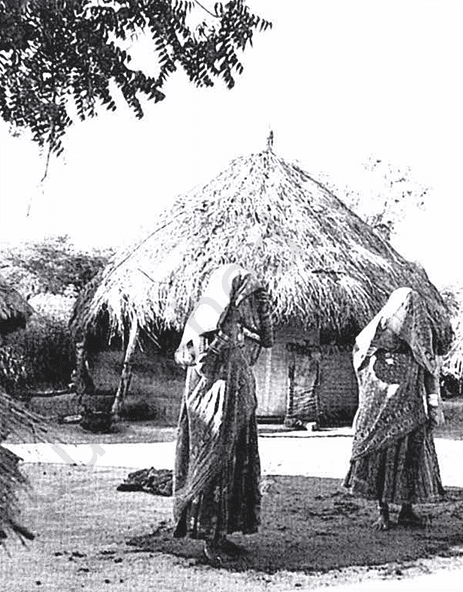
Caste and The Caste System
Caste in the past
- The Portuguese term "casta" is the origin of the word "Caste."
- This term can also refer to a community or a group of people.
- In Indian languages such as Sanskrit, there are two distinct terms that describe the broad institutional system: varna and jati.
- Jati is a general term that encompasses all sorts of things, including living beings, inanimate objects, and even humans.
- The English term "caste" is increasingly being used by people who speak Indian languages, although the term "jati" is more commonly used.
- The term "varna" is used to describe a four-fold division of society into brahmana, Kshatriya, vaishya, and shudra, although this excludes a considerable portion of the population who are known as "outcastes," foreigners, slaves, conquered peoples, and others, sometimes referred to as the panchamas or fifth category.
Features
- The status ascribed at birth is determined by one's birth and is permanent, without any choice.
- There is a hierarchy of rank and status in the caste system.
- Marriage regulations are an integral part of the caste system, with endogamy being a norm, which means that only members of the same group can marry each other.
- Food rules in the caste system include restrictions on certain foods and who can share food with whom.
- The caste system has sub-castes, with some sub-castes having further divisions, creating a segmented organization within the caste.
- The caste system assigned specific roles to different castes, with Brahmins as priests and teachers, Kshatriyas as warriors, Vaishyas as merchants, and Shudras as laborers. There was no scope for occupational mobility.
Caste separation and differentiation principles:
- Each caste has its own distinct norms and regulations, with a focus on common beliefs such as purity, pollution, and endogamous marriage. The caste system also assigns ranks and specific occupations to individuals.
- The caste system is based on wholism and hierarchy, where each caste is interdependent on others within the system. There is a strict hierarchy among castes.
- Although each caste has its own occupation, the caste system's hierarchical structure, emphasis on purity and pollution, and segmented divisions make social mobility impossible.
Colonialism and Caste
- The British were surprised by two things upon arriving in India - the persistence of untouchability and the vast number of subcastes that exist in Indian culture.
- They first conducted a census to determine the number and sizes of various castes and subcastes.
- They also sought to understand the values, perspectives, and traditions of different social groups.
- Additionally, the British established land settlements throughout the subcontinent:
- The zamindari system was introduced in Bengal and the east, where landlords were chosen to collect taxes but often exploited farmers by collecting more taxes than necessary.
- The ryotwari system was introduced in the Deccan region, where farmers were given limited leverage but made significant profits during periods of high production.
- The mahalwari system involved appointing a head for each village to collect taxes from residents, in contrast to the zamindari system.
- Lastly, the British believed that these people needed to be taken care of, and so they introduced the Government of India Act of 1935, which included the terms "Scheduled Caste" and "Scheduled Tribes."
Caste System and the Freedom Movement
All sections of society, including the lower castes or untouchables, participated in the independence movement. Prominent figures such as Mahatma Gandhi, a Brahmin, along with Dalit leaders such as BR Ambedkar and Jyotiba Phule, worked towards the upliftment and integration of Harijans into the broader national movement.
Gandhi's opinions
- He emphasized that the eradication of social evils like untouchability should not result in mistreatment of Harijans, but instead, they should be uplifted.
- He believed that the privileges and domination of the Brahmins would persist even after the advancement of Harijans. His commitment to the inclusion of the underprivileged classes in Indian society was profound.
Caste in the Present
Removing untouchability
- The implementation of Article 17 faced initial challenges due to the opposition from the upper caste, but eventually, a consensus was reached.
- As per the Constitution, employment decisions are supposed to be made based on qualifications rather than factors such as gender or caste. The successful integration of SCs and STs into society has raised their status, but there are still concerns regarding their well-being.
- In urban areas, industries promote equal job opportunities based on skills and qualifications, without discriminating based on caste.
- Despite progress, caste still plays a role in certain areas. For instance, about 80% of Dalits in Ms. Mayawati's BSP hold positions based on their caste. Additionally, although inter-caste marriages are now permitted in cities, there are still reports of honor killings in rural areas as a result of such unions. In politics, topics such as caste-based politicization and reservations in political parties and educational institutions continue to be discussed.
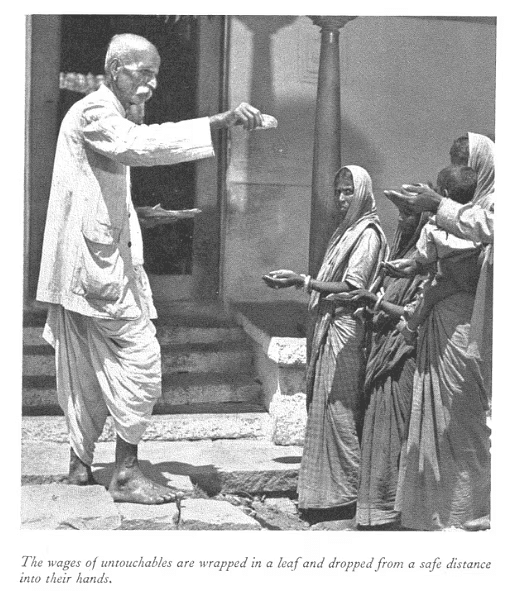
Sanskritisation
If a lower caste member tries to emulate the lifestyle or practices of an upper caste member without changing their caste, it can have both advantages and disadvantages.
Advantages:
- They may have access to a better quality of life and opportunities.
- It can contribute to the gradual improvement of social status for everyone.
- The gap between upper and lower castes may decrease.
Disadvantages:
- Their own cultural identity and traditions may be lost in the process.
- By imitating the practices of the upper caste, they may reinforce the idea of their own inferiority.
- Copying certain traditions, such as the dowry system, can perpetuate the oppression of women.
- It is more of a temporary adjustment rather than a structural change.
- People from their own caste may view them negatively for attempting to imitate others.
Caste in dominance
- After India gained independence, the Land Ceiling Act and other land reforms mandated the sale of zamindars' lands to marginal, small, or landless farmers. As a result, the middle and lower-class landowners acquired social, political, and economic power when they purchased the land.
- This group comprised the dominant caste, and even some shudras were able to purchase land, such as Yadavas in Bihar, Jats in Punjab, Haryana, and Arunachal Pradesh, as well as Reddys and Khammans.
Upper Caste
- The upper castes are oblivious to the role of caste in society.
- They prioritize achieved status over ascribed status.
- Improved access to resources such as technology and education has increased their life chances.
- Education is highly valued among the upper castes.
Lower Caste
- The lower castes are identified primarily by their caste.
- Reservations for education have provided opportunities for upward mobility.
- In rural areas, ascribed status holds more significance in job opportunities.
- Lower castes have used reservations to improve their status and were previously denied life chances based on their caste.
Tribal Communities
Classification of Tribal Society
- A tribe refers to a group of individuals, often related through familial ties, who reside together and share a common culture, language, and history. These groups are especially prevalent among populations living outside of urban areas, and they comprise 8.2% of India's population.
- They are also known by various names, including Janjatis, Adivasis, vanjatis, and Harijans, and they live in a society that is generally egalitarian but has a hierarchical structure. Tribes are identified by shared attributes such as name, dialect, location, profession, and culture, as exemplified by groups like the Gonds, Santhals, and Gujjars.
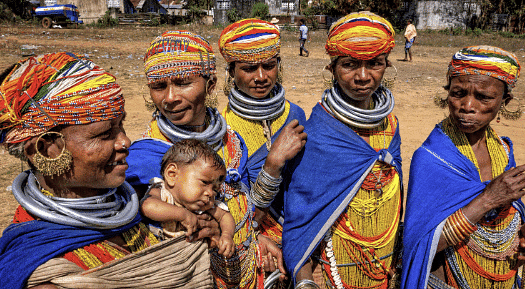
- Additionally, tribal societies are classified based on their "permanent" and "acquired" attributes, with the former including traits like region, language, physical characteristics, and biological habitat.
- India's tribal population is distributed geographically, although there are also concentrations in some places.
- "Middle India," which includes regions from Gujarat and Rajasthan in the west to West Bengal and Orissa in the east, is home to 85% of India's population. The central area of this region is composed of Madhya Pradesh, Jharkhand, Chattisgarh, and parts of Maharashtra and Andhra Pradesh.
- In contrast, the remaining regions of India house only 3% of the population, while more than 11% of people live in the North Eastern states. Most of the states in the North Eastern region have a high concentration of tribal populations, with more than 30% of the population in all but Assam.
- Certain states in this region, such as Arunachal Pradesh, Meghalaya, Mizoram, and Nagaland, have tribal populations ranging from 60% to 95%. In contrast, except for Orissa and Madhya Pradesh, all other states in the country have less than 12% tribal populations
They are divided into four categories based on language.
- The majority of the Indian population speaks Indo-Aryan and Dravidian, with tribes representing only 1% and 3% of speakers, respectively.
- However, the remaining two language families, Austric and Tibeto-Burman, are primarily spoken by tribals, who make up over 80% of Dravidian speakers and 100% of Austric speakers.
- Physical racial characteristics are used to classify people into different groups, including Negrito, Australoid, Mongoloid, Dravidian, and Aryan classifications.
The remaining two language families are shared among the rest of India's population. Tribes in India vary greatly in terms of population, with some groups numbering almost seven million while certain Andamanese islanders may be fewer than one hundred. The largest tribes, including Gonds, Bhils, Santhals, Oraons, Minas, Bodos, and Mundas, each have a population of at least one million people. Based on the 2001 Census, India's tribal population totals 84 million people, which accounts for approximately 8.2% of the country's total population.
Acquired Traits
- Classification of tribes based on acquired traits involves two main criteria: livelihood and degree of integration into Hindu society. Tribes can be categorized as fishermen, food gatherers and hunters, roving cultivators, peasants, and plantation and industrial workers based on their mode of subsistence.
- The degree of assimilation into Hindu society is a common classification in academic sociology, politics, and public affairs. The tribes can also be classified based on their attitude towards Hinduism, with some favorably oriented towards it while others oppose it. From a general perspective, Hindu society accords different status to tribes, ranging from high to low.
Tribe - The concept of a Career
Tribal perspective
- Some tribes desire to join the mainstream society to improve their social status and take advantage of the opportunities available to them through reservations.
- However, some tribes do not want to compromise their culture and identity by associating with non-tribal groups. Tribal elites who have achieved education and improved their status receive better treatment than other workers who are not as educated.
- Skillful workers are admired, while those who are not skilled are often disregarded. Some criticize the idea of keeping tribes separate and argue that they should mix with the general population since they are part of the nation.
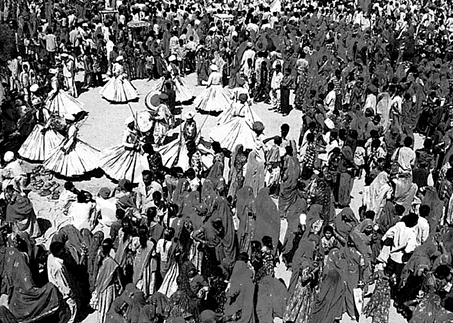
Criticism:
- Since they shouldn't be kept apart, the notion of a tribal group is questioned. They should mix in with the general populace because they are a part of our nation.
- Both castes and tribals work together to fulfil their respective roles in society. We have Hindu fisherman, for instance.
- Tribals-Not Always in Isolation
- Although they weren't always alone, the British took advantage of the tribes when they arrived.
- Tribalism is a term coined by the tribal people. Tribalism is the practice of the tribal people living separately from the non-tribal people in order to claim their uniqueness.
- They played a significant position in Madhya Pradesh and have been a part of numerous kingdoms, including the Gonds. Many tribal people in Rajasthan were Rajputs and participated in the military system.
- They were salt merchants. They lost their status under British administration and worked as casual labourers on plantations, where they were taken advantage of.
The Public's Perception of Tribes
The construction of roads led to the removal of forests, which had a significant impact on the tribal way of life. In order to obtain loans, the tribes had to borrow from lenders who charged exorbitant interest rates.
- As a result of the tribes' objections, the British government began reserving woodlands for their own use, while other portions of tribal land were reserved exclusively or partially for the use of the tribes.
Sociologists held differing views on how to approach the tribal people:
- Isolationists believed that the tribes should be allowed to maintain their traditional way of life, while still protecting them from predatory lending practices.
- Integrationists, on the other hand, saw the tribes as members of society, albeit of a lower caste, and believed in providing for their needs.
Constituent Assembly
- A group of individuals from various social classes and backgrounds collaborated for nearly three years to create the constitution. During this period, they addressed numerous issues concerning indigenous people and those belonging to lower castes. They developed specific blueprints, called "Tribal Plans," that proposed creating reservations for these groups. These plans were incorporated into the larger five-year plans aimed at elevating the status of these groups and promoting their integration into society through reservation policies.
National Development and Tribal Development
- Hydroelectric projects are built for flood prevention, power generation, and irrigation systems.
- The process often involves taking away land and uprooting people from their natural habitat, without adequate rehabilitation efforts.
- For example, the Polavaram Dam on the Godavari River and the Sardar Sarovar Dam on the Narmada have adversely impacted the lives of thousands of tribal communities who depended on the forest for their survival.
- The integration of tribal communities with society has significantly transformed their social, cultural, political, and economic spheres.
- There have been numerous tribal movements and uprisings, and some states such as Manipur, Nagaland, Jharkhand, Chhattisgarh, and Uttarakhand were created due to persistent demands from tribal groups.
- However, tribes still face restricted civil rights, and their political influence in the recently formed states is limited.
- The non-tribal population holds the majority of the authority, leading to violent uprisings from tribal communities who lack political representation.
- Despite these challenges, an educated middle class of tribal members has emerged due to education and reservation policies.
- This has led to an increase in job opportunities, improved living conditions, and upward social mobility.
- The upper-class tribal members are encouraging lower-caste tribal members to pursue education.
- As a result, there has been a rise in tribal identity assertion, with a desire for greater involvement in local development and a preservation of their traditions and cultural identity.
- They seek to achieve "tribal consciousness" and total dominance over all facets of life, including social, economic, political, and cultural spheres.
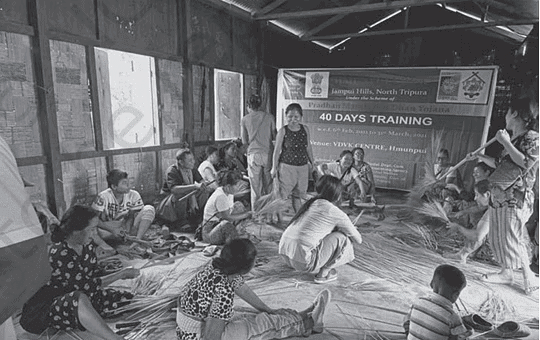
Family and Kinship
Family is a group of individuals who are related to each other either by marriage or by blood. This bond of togetherness is enduring and universal and provides a sense of belonging and security.
Family Classification
Regarding Size
- A small nuclear family includes parents and children.
- A joint family consists of two or three generations coexisting.
- An extended family includes two or more siblings and their families.
Residence
- In a patrilocal family, the girl moves into the boy's home after the wedding.
- In a matrilocal family, the boy visits the girl's home after the marriage.
Descent
- In a patrilineal family, males adopt their father's last name, and the father is the link to the past. Males inherit the property.
- In a matrilineal family, the surname is that of the mother, and the mother is used to determine lineage. Women inherit the property.
- In a bilinear family, the property is shared. The girl receives the movable goods such as jewelry and money, while the boy receives immovable property like land and houses.
The Family in Its Many Forms
- The man holds all critical decisions under the patriarchal system, while power and authority are granted to the female head of the household in a matriarchal society. The tribes of Khasi, Jaintia, and Garo in Meghalaya have established matrilineal and matriarchal societies, while in Kerala, the Nayyars pass property from mother to daughter, but power is still retained by the uncle and nephew.
- While matriarchy has been considered a theoretical concept, there is no historical or anthropological evidence supporting societies where women hold power. Nonetheless, there are matrilineal cultures where women inherit property but do not exercise authority or make public policy decisions.
Matrilineal systems are inconsistent
- The division between the system of authority and control and the line of succession and inheritance causes conflicts. Unlike the latter, which connects the mother's brother to the sister's son, the former links the mother to the daughter, creating a conflict with the latter.
- In the Khasi matrilineal system, a man manages his sister's property and transfers power to his sister's son, while a woman inherits property from her mother and passes it on to her daughter. Consequently, power is transferred from the maternal uncle to the nephew, while inheritance is passed down from mother to daughter.
- This system causes acute role conflict for men in the Khasi matrilineal system because they have obligations to both their natal home and their wife and children. Women experience this strain more severely because a wife can never be sure that her husband does not prefer his sister's home to hers. Men hold power in Khasi society, while women have only symbolic power.
- The system favors male Patrik in over male Patri-kin, but women are more negatively affected by the role conflict created by the matrilineal system. The system is more forgiving of men when there is a rule violation, and a sister will be cautious about her brother's dedication to her welfare.
- In summary, despite being a matrilineal culture, men have all the influence in Khasi society, with the only distinction being that a man's mother's side relatives are more important than those on his father's side.
|
3 videos|706 docs|517 tests
|
FAQs on NCERT Summary: Social Institutions - Continuity and Change (Class 12) - Old & New NCERTs for IAS Preparation (Must Read) - UPSC
| 1. What is the significance of the caste system in Indian society? |  |
| 2. How do tribal communities differ from caste-based societies? |  |
| 3. What roles do family and kinship play in social institutions? |  |
| 4. How has the caste system evolved over time in India? |  |
| 5. What are the contemporary challenges faced by tribal communities in India? |  |
|
3 videos|706 docs|517 tests
|

|
Explore Courses for UPSC exam
|

|
















